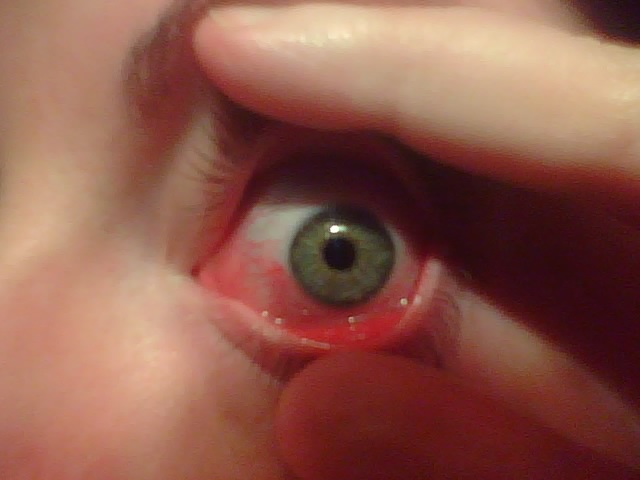Conjunctivitis, more commonly referred to as pinkeye, is a common illness in younger children, but can also affect adults. Symptoms typically include itching, redness in the white part of the eye and drainage. This drainage may be crusty, clear or oozy and green. Eyelids are often pink and swollen. Pain in not typically a symptom and vision should not be impaired in any way.
What Causes Conjunctivitis?
In most cases, pink eye is caused by viral or bacterial infections. Bacterial infections tend to affect both eyes and have a lot of thick, green drainage or crusty drainage. In younger children, it is common to have an ear infection simultaneously. Viral conjunctivitis tends to have clear or watery drainage and is often accompanied by a sore throat. Allergic conjunctivitis is caused by an allergen that irritates the eye, and is common in spring or fall and is usually accompanied by other allergy symptoms such as sneezing, itching and runny nose. It can also be caused by a scratch on the cornea or irritants entering the eye, such as sand or debris.

How is Conjunctivitis Treated?
Bacterial conjunctivitis is treated by antibiotics—usually an ointment that is applied directly to the eye. In some cases, the doctor may prescribe antibiotic drops. If an ear infection is also present, oral antibiotics may be necessary to clear up both infections. Viral conjunctivitis does not require any specific treatment and will eventually heal on its own. Allergic conjunctivitis may be treated with oral antihistamines or eye drops depending on how severe the symptoms are.
What Else Can Be Done to Manage Symptoms?
Regularly use a clean, damp cloth to wipe away drainage. After touching drainage, be sure to wash hands thoroughly. If crust is extra thick, you may need to hold the cloth over the eye for a bit to loosen it up.
When Do You Need to See a Doctor?
If there is fever or ear pain, you should take your child to see a doctor for evaluation. Any child under two should be brought in automatically so they can be checked for an ear infection. If there are red eyes, pain when moving the eyes, high fever, protrusion of the eyeball or the condition was preceded by an injury, it is important to go see a doctor. If treatment is not improving symptoms after a few days, you should also check with a doctor.
What about Conjunctivitis in Newborns?
It is important to bring a newborn to see his pediatrician if you suspect a pink eye infection. It may be due to something as simple as a blocked tear duct or could indicate a more serious eye infection that could cause damage if it is left untreated.
Can You Prevent Conjunctivitis?
The advice may be a bit clichéd and overly simple, but proper hand washing is the number one way to reduce the risk of conjunctivitis. Avoiding touching the eyes is also helpful. If someone in the family has pinkeye, be sure this person has her own washcloths and towels. The infection can be spread through the contagious drainage.

